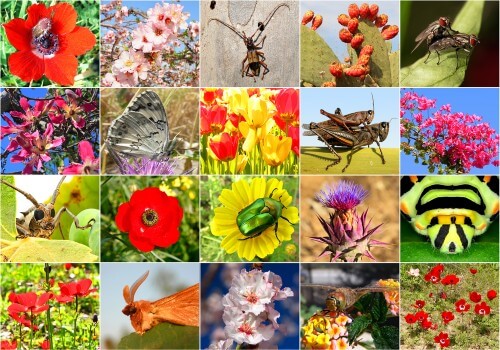Of all the species that existed in the world in the last 3.5 billion years, about 95% became extinct. Many perished in what is known as the five mass extinctions. We are now in the midst of the sixth extinction

Of all the species that existed in the world in the last 3.5 billion years, about 95% became extinct. Many perished in what is known as the five mass extinctions.
So far the researchers agree, but when trying to estimate the number of species today and how quickly they will become extinct, opinions differ. Various estimates that include species of animals, plants and fungi living today range from 2 to 50 million species, this is because until now only a tiny part of our world's biodiversity has been identified. Most of the unknown groups are found in small areas that are often destroyed before the species are identified and described.
The "Red List" of the World Conservation Organization (IUCN) clarifies the lack of information in the latest report (November 2014) in which the organization refers to more than 76 thousand species, which are only about 4% of more than 1.7 million species that have been described and identified, so that the estimates Regarding risk to groups such as fish, reptiles or insects are not accurate.
Knowing the problem, researchers collected the reliable data to create the "The state of life in the world"
” http://www.nature.com/news/biodiversity-life-a-status-report-1.16523
Among the groups described, the group of amphibians is in the greatest danger, with 41% of the species facing the risk of extinction due to an epidemic of chytrid fungi. Large parts of mammals and birds are at risk due to habitat loss as well as poaching.
In trying to predict the future, the picture is even less clear because of the difficulty in predicting the effects of climate change that will likely spur extinction in ways that are not yet known. One way to predict the future is to estimate that the rate of extinction will be constant. The current extinction rate is estimated at 0.01% to 0.07% species extinction per year. This means that thousands of species disappear every year and if the situation continues in a few hundred we will reach the extinction of 75% of all species. The disappearance of 75% of the species is considered a mass extinction.
Some of the "famous" extinct ones are: toads, frogs, and salamanders all over the world, most species of lemurs in Madagascar, African penguins, several species of pangolin in Asia, Asian magellan, Somali ostrich, Persian, chameleons in the Osumbera forest (Tanzania), bluefin tuna and other fish species, Many species of insects, Chinese intoxicants and other plant species, of course rhinoceros, elephants and other large mammals, and more.
A conservation policy will moderate the extinction, but in light of the current trend, there is not much chance of improvement. Although countries are expanding conservation areas on land and at sea, most indicators show that the pressure on species in the wild is increasing and the state of biodiversity is getting worse and worse.
Researchers agree that despite the uncertainty, more attention should be paid to risk assessment. One approach advocates the development of comprehensive computer models that predict how human activity will change environmental systems. Computer models for predicting environmental changes (GEMs) exist, but they are new and imperfect. A group of researchers has published preliminary results from the first global model that tries to imitate the set of environmental interactions in the same way that climate behavior is simulated and predicted. The "construction" of the system (GEMs) lasted three years mainly because of the attempt to represent all species, from a weight of 10 micrograms (plankton) to 150 tons (blue whale). Further development and trials are needed, and to arrive at a good model, a combination of more variables is needed. Completing the system will allow problems to be detected and possibly solved in real time.
According to the International Union for Conservation of Nature's Red List, today it is known that 4529 species of birds, mammals and amphibians are in danger of extinction.
After all this, it is important and worth knowing that if a significant change in human behavior does not occur, the year 2200 will be the marker for the sixth extinction, an "anthropogenic" extinction caused by humanity.
Abstract from an article in Nature
It is recommended to enter the website to see the tables and pictures.

3 תגובות
Erez Gerti wrote today in an article on the Davidson Online website: http://davidson.weizmann.ac.il/online/maagarmada/doubt/%D7%90%D7%91%D7%95%D7%9C%D7%95%D7%A6%D7%99%D7%94-%D7%95%D7%91%D7%A8%D7%99%D7%90%D7%94-%D7%90%D7%99%D7%9A-%D7%9C%D7%90-%D7%A6%D7%A8%D7%99%D7%9A-%D7%9C%D7%9C%D7%9E%D7%93-%D7%91%D7%99%D7%95%D7%9C%D7%95%D7%92%D7%99%D7%94 Extinction events are definitely an integral part of the development of life, but they have a heavy price - the violation of the ecological balance and the creation of a new ecological balance.
An error in the article says 71 million, instead of 1.7 million